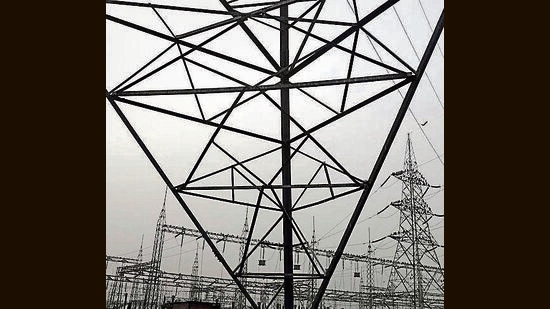Peak electricity demand projected to touch 215,000 MW this year
The highest ever peak power demand was 200,570 MW at 12:01 hours on July 7, 2021 and this year that record is set to be broken
NEW DELHI: The government has asked generating companies to import about nine million tonnes of coal for blending at thermal power stations to meet the projected peak electricity demand of 215,000 MW this year as the economy is expected to rebound.

In an interview, Union power secretary Alok Kumar said the electricity demand is increasing at a compound annual growth rate of 4.5% over 2018-19. “We are basing our projections on 2018-19 because that was found to be a normal year if we see the trend line. This year, it was expected that post-Covid-19, the economy would rebound and accordingly, the demand also has increased.”
Kumar said they are expecting electricity demand to hit 2,05,000 MW in April. “...between June and September, we are expecting the peak to touch around 2,15,000 MW.”
The highest ever peak power demand was 200,570 MW at 12:01 hours on July 7, 2021. This year, that record is set to be broken, Kumar said. He added that ensuring adequate coal stocks at power stations will be a key challenge.
India has been facing a coal crisis, which aggravated between October and November last year due to extended monsoon and an increase in the demand for domestic coal because of expensive imported coal. The crisis triggered power supply issues in states such as Delhi, Maharashtra, and Gujarat, where distribution companies resorted to power cuts.
Kumar said coal stocks were not increasing at the pace as they had previously planned as demand has gone up. “This year too, dispatches are higher than the previous year, but simultaneously, the demand is also much more.”
Kumar said high imported coal prices were also creating more pressure on domestic coal consumption. “We have given our electricity projections to the coal and railway ministries and they have promised that they will ramp up their coal production and dispatches.”
Kumar called it a challenging task because both coal and railway ministries have to ramp up their capacities.He added the railway ministry this year will also be increasing the number of rakes and wagons. Kumar said new tracks were also being laid for this purpose.
“To avoid a situation, we faced in October last year, this time, we have also asked generating companies to import some coal for blending. So, we will have some cushion in case the demand is higher than the coal supply. This was not there last year. We are expecting around 8-9 million tonnes of coal to be imported by June end and that should see us comfortably through the monsoon.”
Kumar said India is not importing much coal for even the imported coal-based stations. “Imported coal is not being dispatched because their prices have gone up. The idea is to compensate for that much coal through blending. The general trend, however, is that we are reducing imports of coal,” Kumar said.
He clarified it will be wrong to decide or claim that no new coal-fired thermal plants in India will be built apart from those that are under construction.
The Central Electricity Authority has projected that India will require around 255-260 GW of coal capacity by 2030. “We have coal-based power plants with a total capacity of around 30,000 MW under construction. Depending on the growth of renewable energy and growth of storage, we might require 8,000-10,000 MW more,” he said.
Kumar added another 60,000 MW solar and wind power projects are under construction, while 10,000 MW more from hydropower is also expected. “In total, around 1,00,000 MW is under construction. Largely, it [upcoming power generation] will be from non-fossils.”
At the UN Climate Change Conference (COP26) in Glasgow in November, Prime Minister Narendra Modi pledged to cut India’s carbon emission by 1 billion tonnes by 2030. The commitment also includes meeting 50% of India’s energy requirements from renewable energy by 2030 and increasing non-fossil fuel power generation capacity to 500GW by the end of this decade. Modi also pledged net-zero emissions by 2070.
Currently, 51.7% of India’s power generation comes from coal-based power plants. Around 700 million tonnes of coal are used by power plants annually.
Get Current Updates on India News, Lok Sabha election 2024 live, Election 2024 along with Latest News and Top Headlines from India and around the world.




